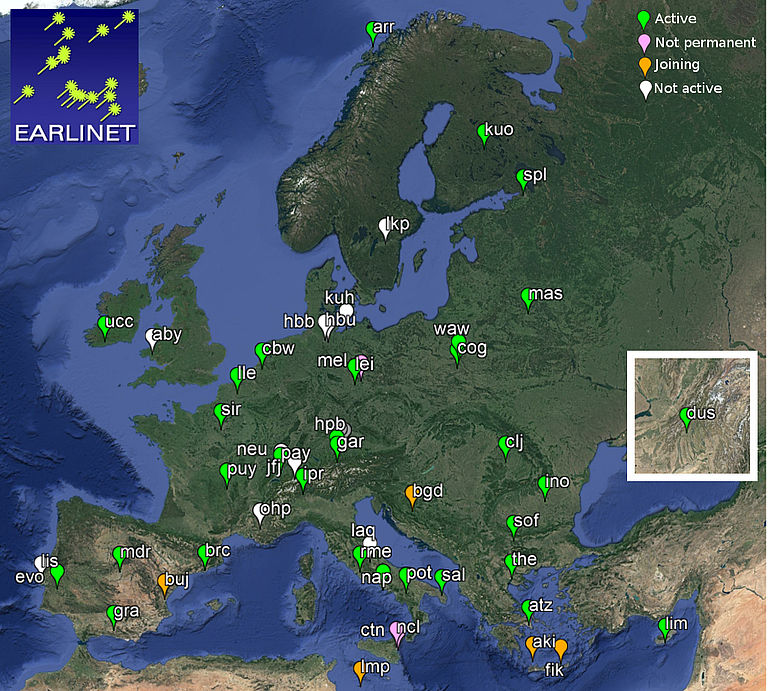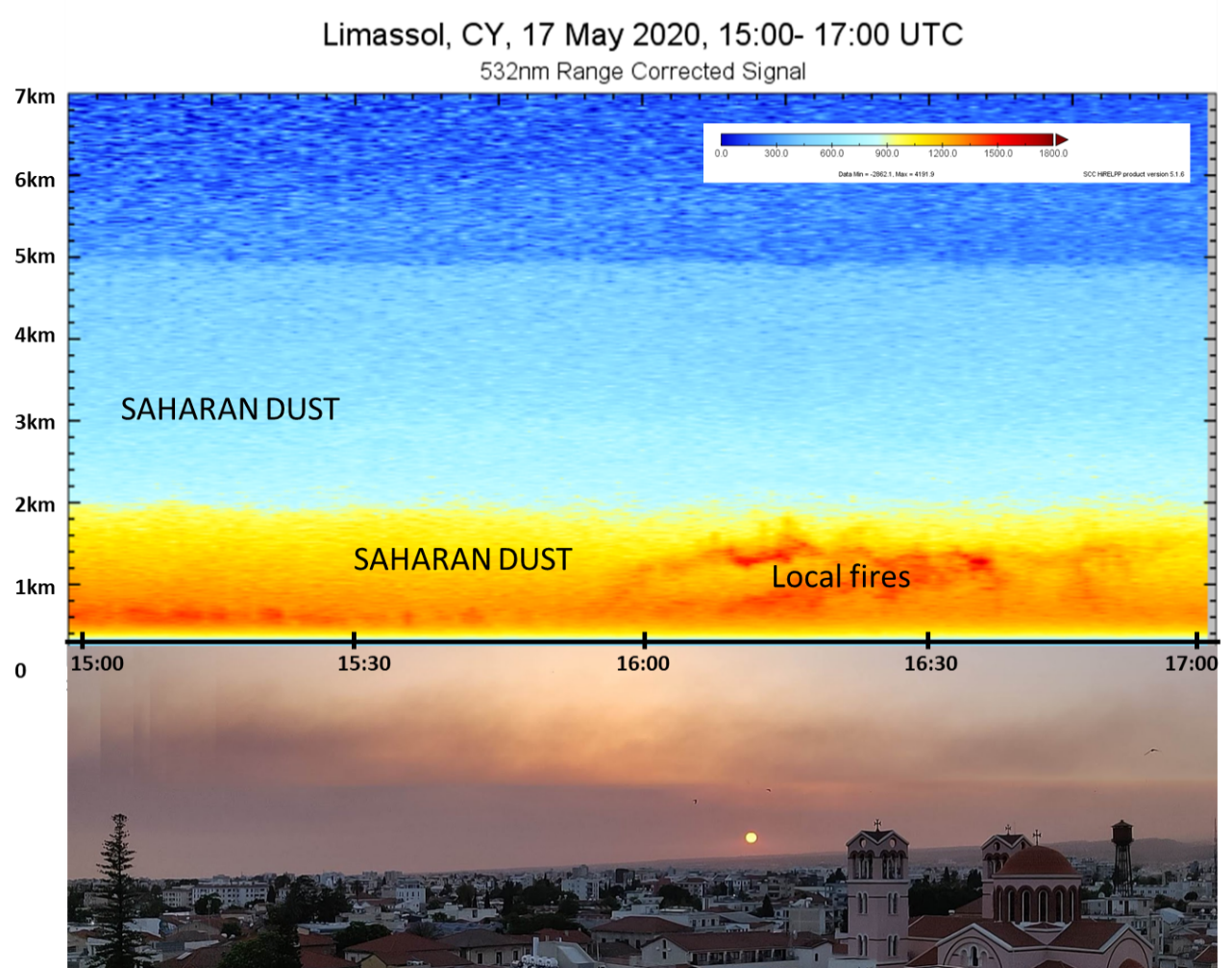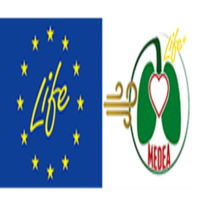The ERATOSTHENES Centre of Excellence –‘Excelsior’ H2020 Teaming Project & Cyprus University of Technology participates actively in the EARLINET/ACTRIS intensive campaign, using the EARLINET lidar and the AERONET sun photometer of the Cyprus University of Technology. The campaign is organized as part of the ACTRIS initiative for studying the changes in the atmosphere during the COVID-19 lockdown.
The scope of the campaign is twofold:
a) to monitor the atmosphere’s structure during the lockdown and early relaxation period in Europe;
b) to identify possible changes due to decreased emissions, by comparing the current observations with the aerosol climatology in Europe.
During the entire month of May, 20 EARLINET/ACTRIS lidar stations measure at least two-times per day and the data is processed by the Single Calculus Chain in a centralized hub. In order to test the Near Real Time (NRT) capabilities, the data is available within 12h after the end of each measurement.

Figure 1: EARLINET Lidar stations providing daily measurements of the aerosol profiles
The ERATOSTHENES CoE Atmospheric Remote Sensing Unit located in Limassol currently operates a depolarization lidar system and the CUT-TEPAK sun-photometer, providing valuable information for the atmospheric structure in the Eastern Mediterranean.

Figure 2: Smoke from local fires is visible inside the homogeneous dust layer over Limassol on the 17th of May 2020
Within 2020 the ERATOSTHENES CoE, through the ‘EXCELSIOR’ H2020 Teaming project https://excelsior2020.eu/ will be part of the PollyNet, running a next generation PollyXT lidar system developed at the Leibniz Institute for Tropospheric Research (TROPOS). The sophisticated multiwavelength-Raman-polarization lidar will be used for scientific purposes, with the advantages of an easy-to-use and well-characterized instrument.
Stay tuned for the weekly reports and check the daily quicklooks at: https://quicklooks.earlinet.org/ !
Πρόσκληση σε Διαδικτυακό συνέδριο του προγράμματος Media Lab
The ERATOSTHENES Centre of Excellence –‘Excelsior’ H2020 Teaming Project & Cyprus University of Technology participates actively in the EARLINET/ACTRIS intensive campaign, using the EARLINET lidar and the AERONET sun photometer of the Cyprus University of Technology. The campaign is organized as part of the ACTRIS initiative for studying the changes in the atmosphere during the COVID-19 lockdown.
The scope of the campaign is twofold:
a) to monitor the atmosphere’s structure during the lockdown and early relaxation period in Europe;
b) to identify possible changes due to decreased emissions, by comparing the current observations with the aerosol climatology in Europe.
During the entire month of May, 20 EARLINET/ACTRIS lidar stations measure at least two-times per day and the data is processed by the Single Calculus Chain in a centralized hub. In order to test the Near Real Time (NRT) capabilities, the data is available within 12h after the end of each measurement.

Figure 1: EARLINET Lidar stations providing daily measurements of the aerosol profiles
The ERATOSTHENES CoE Atmospheric Remote Sensing Unit located in Limassol currently operates a depolarization lidar system and the CUT-TEPAK sun-photometer, providing valuable information for the atmospheric structure in the Eastern Mediterranean.

Figure 2: Smoke from local fires is visible inside the homogeneous dust layer over Limassol on the 17th of May 2020
Within 2020 the ERATOSTHENES CoE, through the ‘EXCELSIOR’ H2020 Teaming project https://excelsior2020.eu/ will be part of the PollyNet, running a next generation PollyXT lidar system developed at the Leibniz Institute for Tropospheric Research (TROPOS). The sophisticated multiwavelength-Raman-polarization lidar will be used for scientific purposes, with the advantages of an easy-to-use and well-characterized instrument.
Stay tuned for the weekly reports and check the daily quicklooks at: https://quicklooks.earlinet.org/ !





